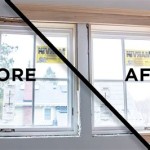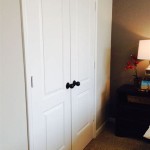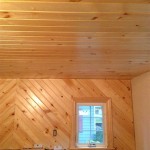Average Cost To Paint A Home Interior
Painting the interior of a home is a common home improvement project undertaken for various reasons, including aesthetic enhancement, increasing property value, and protecting surfaces from wear and tear. The cost associated with this project can vary significantly depending on numerous factors. Understanding these factors and having a general idea of the average cost range can assist homeowners in budgeting effectively and making informed decisions.
Estimating the average cost to paint a home interior requires a nuanced approach. While a simple square footage calculation might offer a basic starting point, it's crucial to consider the intricacies of the project. Variations in room size, wall height, the existing condition of the walls, the type of paint used, and labor costs all contribute to the final price. This article aims to provide a comprehensive overview of the factors influencing the cost of interior painting and a comprehensive overview of the typical average costs.
Factors Influencing Interior Painting Costs
Several key factors contribute to the overall expense of painting a home's interior. These elements need to be carefully considered when developing a project budget:
1. Square Footage and Surface Area: The most direct correlation to the cost is the total square footage of the area to be painted. Larger homes naturally require more paint and labor. However, it's not just the floor space that matters. The total surface area of the walls and ceilings dictates the quantity of paint needed. Walls with higher ceilings will require more paint than those with standard ceiling heights.
2. Condition of Walls: The existing condition of the walls significantly impacts the amount of preparation work necessary. Walls with cracks, holes, or uneven surfaces require patching, sanding, and priming. These additional steps add to the labor time and material costs. Walls with pre-existing wallpaper need an additional step, removal of wallpaper, which can be a time-consuming and costly process depending on the type of wallpaper and the adhesive used.
3. Type of Paint: Different types of paint vary significantly in price. Premium paints with enhanced durability, stain resistance, and color retention will be more expensive than standard-grade paints. Specialized paints, such as those with mildew resistance for bathrooms or low-VOC (volatile organic compounds) options for improved air quality, also contribute to higher costs. The number of coats of paint required affects the overall cost. While one coat might suffice in some situations, two or three coats are often necessary to achieve optimal coverage and durability.
4. Labor Costs: Labor costs comprise a significant portion of the overall expense. Professional painters charge by the hour, by the room, or by the square foot. Hourly rates vary depending on the geographic location, the painter's experience, and the complexity of the job. More experienced painters or painting contractors may charge higher hourly rates, and their cost may include insurance, permits, and other business-related expenses. The complexity of the project, such as painting trim, molding, or intricate architectural details, will also influence labor costs.
5. Room Complexity: The complexity of the rooms being painted affects the costs. Rooms with many windows, doors, or built-in features require more detailed work and precision, increasing the labor time involved. Bathrooms and kitchens often require specific types of paint and more meticulous preparation due to higher moisture levels and potential for grease or grime buildup.
6. Geographic Location: The cost of living and the demand for painting services vary by location. Labor costs are typically higher in metropolitan areas compared to rural areas. Material costs may also fluctuate depending on local supply and demand.
7. Additional Services: The total cost can be influenced by services beyond general painting, such as removing old wallpaper, moving furniture, or cleaning up. While some painters may include these services in their standard quote, others may charge extra. Clarifying what is included in the quoted price is essential to avoid any unexpected expenses.
Average Cost Breakdown
Given the considerable variation in factors influencing the cost, providing a precise average cost is challenging. However, general ranges can offer a helpful benchmark. These averages are based on commonly reported figures and should be used as a guideline:
Cost per Square Foot: Painting the interior of a home typically ranges from $2 to $6 per square foot. This figure encompasses both labor and materials. Lower-end costs usually involve minimal preparation work, standard-grade paint, and simpler room layouts. Higher-end costs reflect extensive preparation, premium paints, and more complex projects. Keep in mind this calculation includes the floor square footage and not the surface area of the ceilings and walls.
Cost per Room: The cost to paint a single room ranges from $400 to $1,500. Smaller rooms, such as bathrooms or powder rooms, typically fall on the lower end of this range, while larger rooms, such as living rooms or master bedrooms, may cost more.
Cost for an Entire House: Painting the entire interior of an average-sized house (1,500-2,500 square feet) can range from $3,000 to $15,000. This cost is subject to the number of rooms, the complexity of the painting project, and the quality of the paint and labor involved. The more rooms, the greater the surface area, and the more complex the design, the higher the price is going to be.
Material Costs: The cost of paint and painting supplies typically accounts for 15% to 20% of the total project cost. High-quality paints can cost $30 to $70 per gallon, while primers, brushes, rollers, tape, and other supplies can add an additional $50 to $200, depending on the size of the home and the scope of the project.
Labor Costs: Labor costs typically represent 80% to 85% of the total project cost. Professional painters usually charge $25 to $75 per hour, depending on their experience, location, and the complexity of the job. For an average-sized house, labor costs can range from $2,000 to $12,000, depending on the factors mentioned above.
These cost estimates provide a general guideline. Homeowners are advised to obtain multiple quotes from local painting contractors to receive accurate and personalized estimates for their specific project and requirements.
Tips for Reducing Interior Painting Costs
While quality should always be a priority, several strategies can help homeowners reduce the cost of interior painting without compromising the integrity of the project:
1. DIY Preparation: Preparing the walls for painting is a labor-intensive task. Homeowners can save money by handling tasks such as patching holes, sanding surfaces, and removing wallpaper themselves. Ensure that the work is done thoroughly to avoid any issues with the final paint job.
2. Choose Paint Wisely: Selecting the right type of paint is crucial for both the aesthetics and the longevity of the paint job. However, opting for mid-range quality paints can provide a balance between cost and performance. Consider purchasing paint during sales or discounts to save money.
3. Obtain Multiple Quotes: Getting estimates from several painting contractors is essential to compare prices and services. Be sure to provide contractors with detailed information about the project to ensure accurate quotes. Verify the scope of work included in each quote and make sure they are offering the services required. Ensure that each contractor is licensed and insured for liability and workers comp insurance for the protection of your investment.
4. Paint During Off-Peak Seasons: The demand for painting services tends to be lower during certain times of the year, such as the winter months. Scheduling the project during an off-peak season may result in lower labor costs.
5. Limit Scope: If budget constraints are a concern, consider painting only the most noticeable areas of the house. Prioritize rooms that need the most attention and defer painting less-used spaces to a later date.
6. Provide Good Access: Making sure the painting crew has smooth access to the walls they need to paint will help them work more quickly. Removing furniture and other obstructions from the area which is to be painted can save time and money.
7. Use Standard Colors: Using custom mixed paint colors can cost extra, as opposed to using stock paint colors. Using paints that are already available can help you save money.
By implementing these cost-saving strategies, homeowners can manage their interior painting projects more efficiently and achieve the desired results while staying within budget.
Ultimately, the average cost to paint a home interior is a multifaceted calculation that hinges on a confluence of factors. By carefully considering these elements, homeowners can develop a comprehensive budget and navigate the process of selecting a painting contractor with greater confidence. Receiving detailed and transparent quotes ensures the project aligns with their financial expectations.

Cost To Paint A House Whole Painting Fixr

How Much Does It Cost To Paint The Interior Of A House In Paintrite Pros

How Much Does Interior House Painting Cost A New Leaf

Cost To Paint The Interior Of A House In 2024

Average Cost To Paint A House Coloradopainting Com

Cost Of Painting Your Home Per Sq Ft In 2024 Detailed Guide

How Much Does Painting House Exterior Cost In 2024 Forbes Home

How Much Does It Cost To Paint The Interior Of A House Angi

2024 Interior Painting Costs Average Cost To Paint Of House

How Much Does It Cost To Paint A Room In 2024 Forbes Home
Related Posts








